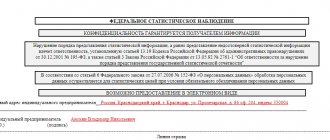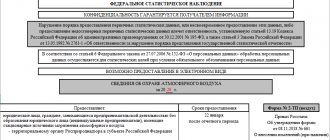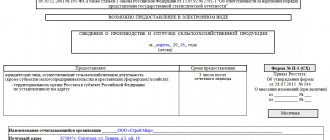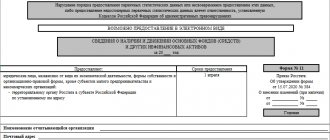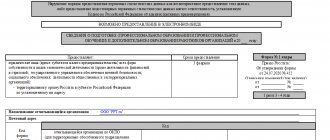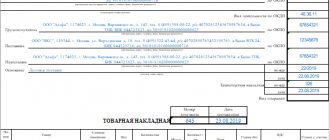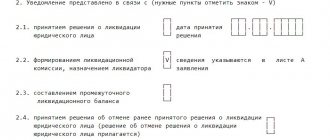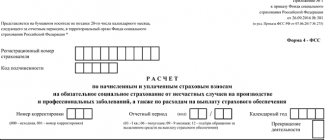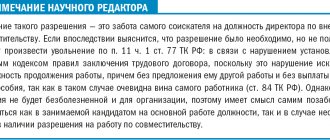Where and when should the PM-1 auto cargo report be submitted?
All small enterprises, with the exception of micro-businesses, engaged in road freight transportation on a commercial basis, are required to submit this form to the territorial offices of Rosstat.
The form is submitted quarterly, if cargo transportation was carried out regularly during the reporting period, by the 15th day of the month following the reporting quarter. If auto companies do not regularly provide cargo transportation services on a commercial basis, then the weekly report is submitted before the 15th day (inclusive) of the month that follows the month with the reporting week.
Individual entrepreneurs engaged in road transportation do not submit the specified form PM-1 auto cargo . However, simplified enterprises and temporarily non-operating companies are not exempt from submitting these reports. Bankrupt companies that have opened bankruptcy proceedings also submit reports.
IMPORTANT! When filling out the report, only work on the transportation of goods by road, which is carried out on a commercial basis, is taken into account. On-farm transportation, including without going onto a public road (in all cases), is not reflected in the report.
The report is submitted by the company to the territorial office of Rosstat at its location. In the event that the legal address of the company does not coincide with the actual one, reporting is submitted at the place of actual business activity.
If the reporting was not submitted within the specified period, in accordance with Art. 13.19 of the Code of Administrative Offenses, an administrative penalty in the form of a fine is imposed on the violating company, as well as on the officials appointed by the director responsible for submitting reports.
How to fill out the form
The form was introduced by Rosstat Order No. 527 dated August 19, 2014; the same document contains rules for filling out 1-IP (vehicle cargo). The form consists of a title page and two sections.
Title page
Fill out in the same way as all similar sections: indicate your first name, patronymic, last name and registration address with postal code. You will also need the OKPO code. When filling out other sections of the form, put dashes in lines for which there is no data.
Section 1
The local statistics office indicates the week of the reporting quarter, which you need to focus on when entering data. The individual entrepreneur enters information about the machines in his fleet at the beginning of the specified week. If there was no cargo transportation during this week, only the first section is filled out, without filling out the second.
The list of vehicles in the first section includes trucks with a universal body and a specialized body, but does not include vehicles on a cargo chassis (cranes, garbage collection vehicles and garbage trucks, etc.), and also does not include vehicles that are engaged only in maintenance (garbage removal, cleaning of roads and territories).
The list of cars includes cars owned, rented (including with a driver), and cars received under a leasing agreement. Includes trucks that are registered to family members of the individual entrepreneur, as well as trucks of drivers who are hired to work with their own cars. It doesn’t matter where the truck is located: on a business trip or under repair, it is included in section 1.
Cars are grouped by load capacity in columns 4–9 of the section. The load capacity of tractors is indicated along with the load capacity of the trailers that come with them. Take the data from the technical passports of the cars. If the registration certificate is not available (say, in the case of a rental car), provide approximate values. Check that the sum of columns 4–9 is equal to the total number of trucks in the section.
Section 2
The second section also contains data for the week indicated by the local Rosstat department. Daily transportation of goods on a commercial basis is taken into account.
Enter the trip number in the first column, loading and unloading points in the second and third. Indicate the city (town, village) and, for foreign locations, the country (Ukraine, Germany, Kazakhstan).
In the fourth column, indicate the mileage during this transportation with an accuracy of 100 m based on the odometer readings or shipping documents. Unladen mileage is not taken into account.
In the fifth column, indicate the weight of the cargo transported during the trip with an accuracy of 100 kg; cargo transported by car with a trailer is also reflected here. Indicate the weight taking into account the weight of containers or packaging based on shipping documents. If this is not possible, determine the weight by weighing and calculating. In difficult cases, it is possible to determine the weight based on the carrying capacity of the machine and the degree of its loading.
If the vehicle delivered cargo to several points, indicate the weight of the cargo at the loading location. If the vehicle collected cargo in several places, indicate the weight of the cargo at the unloading location.
Do not include technological transportation in the section - without going onto a public highway (inside a construction site or quarry, between warehouses or workshops). Also do not include the transportation of snow, garbage, mail, newspapers and magazines.
Control ratios
Before submitting the form, check it for correctness using the following control ratios:
- Column 3, line 10 is equal to the sum of columns 4–9.
- Column 3, line 10 is greater than or equal to Column 3, line 11.
Submit form 1-IP (truck load) and other forms of statistics via the Internet in the Kontur.Accounting web service. Easy to fill out, easy to turn in. The service also includes simple accounting and tax accounting, salaries, reporting, taxes, and expert assistance. For the first two weeks, work with the service for free.
Procedure for filling out the PM-1 auto cargo report
In the address column of the form you should indicate the full name of the company, corresponding to that specified in the charter, and then a short name in brackets. The actual address of the company is indicated, even if it does not coincide with the official one.
The report, the form of which was approved by Rosstat order No. 527 dated August 19, 2014, must contain all the necessary indicators. If a value is not specified, a dash is placed in its place. The report contains data for the reporting month or reporting week.
The obligation to submit reports is also imposed on those businessmen who do not provide motor transport services on a regular basis. If during the reporting period there were no activities related to road transportation, then only the basic 1st section is filled out.
This section contains all the information about the freight transport available at the enterprise, including those rented or leased. The report does not include information about special vehicles, such as snowplows, auto repair shops, i.e., those that are engaged in the economic maintenance of territories and/or mechanisms.
Section 1 provides information about all trucks, even if at the time of filling out the report they are not in service (for example, they are under repair or leased). Line 101 of column 3 does not indicate information about those cars that are being repaired or awaiting early repair, as well as about those that will be written off from the balance sheet due to the impossibility of restoration to a working condition.
Section 2 contains data on the operation of vehicles transporting goods. Further, the report reflects in a structured manner information about the operation of the cars (whether they took part in the survey when they were released from the garage).
Section 3 contains information about the company’s cargo turnover for the reporting period. Only work on the transportation of goods done for payment is taken into account. In this case, in subsection 3.1 generalized information for the quarter is indicated, but then subsection 3.2 is not filled out. Conversely, when filling out subsection 3.2, information about each car trip for the reporting week is entered, but subsection 3.1 is not filled out.
If the company has a large fleet of trucks, then subsection 3.2 provides information about each trip for 2 days of the reporting week with the volumes of transportation inherent to this company.
Contents of the questionnaire
The entrepreneur enters information into the title page and sections of the 1-IP (vehicle cargo) form independently, with the exception of the window with information about the reporting period. The staff of the statistical agency will do this themselves.
- The title page contains information about the company: the full name of the owner, registration address, postcode, OKPO code, which the entrepreneur puts down himself.
- Section 1 contains information about cars, or rather availability. The total number of vehicles is recorded here. The exception is special equipment. Trucks on a voyage, a business trip, or undergoing repairs are also taken into account when filling out the report. Rented, leased, and owned trucks are included in the total. The section indicates information about the carrying capacity of the vehicle, which is indicated in the technical passport of the vehicle.
- In the second section, information about the actual transportation is indicated: the beginning and end of the journey, the distance traveled from the speedometer, the total weight of the cargo for one trip. Weekly numbers are calculated here.
Results
Small enterprises that regularly (or intermittently) provide services for the transportation of goods by road on a commercial basis must submit special reports. Form PM-1 auto cargo, depending on the activity of the company's auto cargo activity, is submitted to the territorial office of Rosstat quarterly or monthly (if the activity is carried out irregularly).
For information on how to fill out a waybill for a truck, read our article “Truck waybill in accounting (form).”
Deadlines for submitting form 1-IP to statistics
The deadline for submitting form No. 1-IP (annual) for 2021 is indicated on the form in the first part - March 2. Therefore, the 2021 form should have been submitted no later than March 2, 2021. The deadlines for submitting reports for 2021 should be determined similarly.
If you do not receive the notification, before the deadline for submission, you should contact the Rosstat website or TOGS and check whether the individual entrepreneur is included in the list of those submitting the form.
Failure to provide or untimely provision by respondents of primary statistical data or administrative data or provision of unreliable primary statistical data or administrative data entails the responsibility of respondents provided for by the legislation of the Russian Federation - the imposition of an administrative fine on officials in the amount of 10 to 20 thousand rubles; for legal entities - from 20 to 70 thousand rubles.
Responsibility is provided for violation of deadlines for submitting form No. 1-IP
When submitted to the statistics department, the form is usually submitted with a covering letter. On the second copy, which remains with the person who submitted the form, the employee who accepted it makes a note of acceptance indicating the date.
Those included in the Rosstat list submit Form No. 1-IP to statistics no later than the deadline. Other businessmen do not prepare this report. The information presented on the forms is used for statistical monitoring of the activities of individual entrepreneurs.
Form 1 Individual Entrepreneur Trade is submitted by entrepreneurs who are included in the Rosstat list.
Depending on business turnover, statistical reporting of individual entrepreneurs is required to be submitted with the following frequency:
- once a month;
- quarterly;
- once a year;
- once every five years (in the case when the individual entrepreneur is not on the Rosstat list).
Reporting may be submitted in person or via email.
In the form you need to fill in the OKPO and INN code.
Form No. 1-IP is compiled by individual entrepreneurs, except for those engaged in retail trade. At the same time, individual entrepreneurs engaged in the retail trade of motor vehicles and motorcycles do not fall under the exception.
Procedure and sample for filling out the form 1-entrepreneur
The material has been updated in accordance with current legislation 02/19/2019
Form 1-IP consists of two parts. The first contains general information for those filling out, positions for entering personal (personal) data of the individual entrepreneur, as well as the statistical code of the individual entrepreneur - according to OKPO and the tax number of the individual entrepreneur - INN. The second part is a questionnaire with questions.
You can fill out the form either manually or on a computer. Any ink color is acceptable except red and green. All indicators, except for the number of employees, are indicated in thousands of rubles with one decimal place (decimal place). First, you should fill out section 1, which includes the name and address of the respondent company. In addition, it is necessary to indicate the OKPO code of the company.
The section also has fields 101 and 102, where you need to specify two dates:
- date of registration (or re-registration) of the legal entity;
- date of actual start of business activity.
If the legal entity was not formed in the reporting year, then fields 103–108 do not need to be filled in. Otherwise, they must indicate information about the method of formation of the legal entity. This can be either a new enterprise or a company resulting from a reorganization, merger or spin-off.
Section 2 of form 1-enterprise for 2021 indicates data on the authorized capital of the legal entity. You need to indicate its size, as well as the sources of formation in fields 202–210, in accordance with the existing shares. In order to mark the participation or, conversely, non-participation of foreign entities in the formation of the authorized capital, you need to circle one of the fields 211 or 212.
Section 4 is intended for information about the organizational structure of the respondent legal entity. In fields 401 and 402 you need to indicate data on the number of separate divisions, including branches and their territorial location.
One of the most voluminous in the document - section 5 - is filled out on the basis of accounting and tax accounting data. In some ways, it duplicates the enterprise’s balance sheet (Form 1) for 2021.
In field 501 you need to enter the amount of the organization’s total turnover for the reporting period. This value is further deciphered:
- fields 502–505 - volumes of products, services and work performed by the legal entity itself,
- fields 505–506 - revenue from processing raw materials supplied by customers,
- fields 507–511 - revenue from the resale of goods and services of other companies,
- field 512 - revenue from the sale of inventory items that were purchased for own production,
- fields 513–514 - revenue from construction work performed by third parties under subcontracts,
- fields 515–516 - cost of goods produced,
- field 517 - cost of construction and installation work performed for own needs,
- field 518 - cost of products shipped to third parties free of charge,
- field 520 - the cost of agricultural products transferred to separate divisions that are not engaged in agriculture,
- field 519 - cost of produced feed and fertilizers used for own production,
- fields 521–522 - the cost of building materials and structures used in construction work,
- fields 523, 524 - amounts of subsidies from the budget, if any,
- field 525 - the number of months in the reporting year when the company carried out commercial activities.
- field 526 - amount of customs duty for the reporting year.
Section 6 of the report is intended for information on the legal entity’s expenses for the production and sale of goods, services and works, as well as related indicators. In addition, in this section it is necessary to indicate the balances of inventory items, both at the end and at the beginning of the reporting period. The same section of the form reflects all taxes and fees paid during the reporting period that are to be included in the cost of goods, works and services. This is what lines 651–655 are for. The amount of VAT accrued for goods, services and work sold in 2021 is indicated separately; it should be reflected in line 670 of the form.
How to fill
In OKUD, the form number 1-IP autoload is 0615069. Form 1 IP autoload can be downloaded on the official website of Rosstat or on our website. The document consists of several parts:
- Title page: here fill out all the data of the enterprise (name, activity code, select the government body to which the document is sent).
- Section 1: indicate vehicles used for cargo transportation (personal, rented, at work, idle).
- Section 2: records of cargo transportation are kept (points of departure, arrival, distance, cargo weight).
In each of them, fill out all the details. Correct filling of the statistical report:
- A cap. At the top of the form is the businessman’s postal address, his full name, and signature.
- After the tear-off line there is a title card, which indicates the OKPO of the entrepreneur. OKUD in sample 1-IP the truck load is entered automatically.
- Next comes a window that is filled out by the federal state statistics service. These fields are left blank.
Section 1 consists of 4 columns, where the latter is divided into 6 columns, which indicate the carrying capacity of the vehicle.
